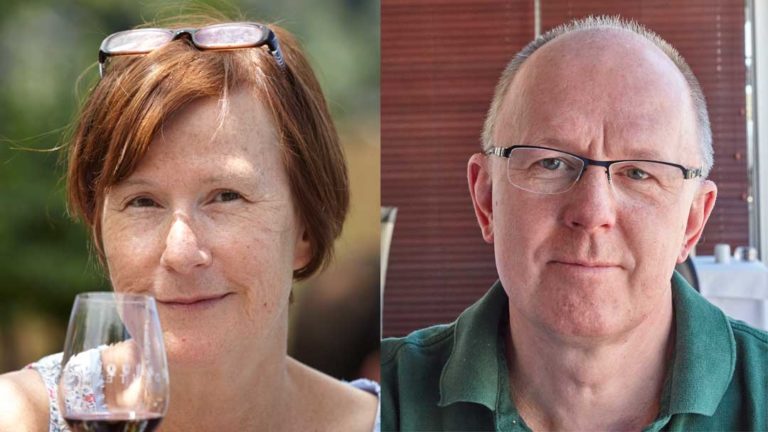
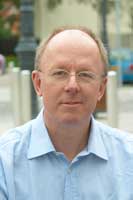
 Sparkling trends
Sparkling trends
It is popular to talk about upcoming trends at this time of year. An ongoing trend that certainly will continue in 2017 is the world’s unquenchable thirst for bubbles. In 2016 Prosecco and Cava had an enormous success. Champagne has been doing well although the domestic market is a bit slow at the moment. English sparkling increased in quantity (and quality), although still a midget.
Very recently the decision also was taken to allow the large southern French appellation IGP Méditerranée to also make sparkling wine. The decision was not popular with the Crémant appellations (Crémant d’Alsace, Crémant de Bourgogne, etc.) French winemakers sometimes have difficulties to accept competition. Perhaps they fear that the word Mediterranean will have an attraction for customers, especially if they are on holiday down there. As they often are.
But competition is a good thing and above all, variety is. As more bubbly wine is made in the world and as the quality gets better and better, the consumers will start to treat the sparkling wine just as a still wine.
In other words, we consumers will no longer buy only “a wine that sparkles”, just as little as we buy a “white wine” or a “red wine”. We buy a wine because it has a specific origin or is made from a certain grape variety or by a particular producer, or has a certain character. And we will more and more buy sparkling wine in the same way. It is not just the bubbles that are important, but also what’s behind them.
We wine lovers can certainly consider ourselves lucky today. There has never been so much delicious bubbly as today, from Champagne, crémants, cava, Franciacorta, Prosecco, South African MCC, or even – that we had the pleasure to drink the other day – Crisecco from Cricova in Moldova.
20 years of wine on the internet
This year it is 20 years since we started to write on wine on the internet! This gave us a reason to look back on the time that has passed. It turned into an interesting (I think) review of how technology and communication has changed. 20 years ago “the internet” was something obscure that few people used. And mobile phones were considered by many to be an unnecessary fad! Read the article (below and on BKWine Magazine) on this story. As far as we know we were even the very first web site (“home page”) on wine in Swedish.
Book Award
Can’t help to also mention how proud and happy we are having been awarded first prize in “Årets Svenska Måltidslitteratur”, ie the Gastronomic Academy’s Annual Book Awards for our new book series “Guide to the World of Wine”. The jury said “[a book series] of international class”. Read more on that below. Today there are four books in the series: Bordeaux, Burgundy, Tuscany, and the Piedmont.
Wine travel
And don’t forget to take a look at the spring season wine tours. It is high time to decide. Book now!
We have also published the autumn dates and destinations if you like longer term planning.
We wish all our readers a very Happy New Year!
Britt & Per
PS: Recommend to your friends to read the Brief!
– – – – –
What’s on at BKWine Tours
Winter / spring 2017
- Chile and Argentina in South America, January 28 – February 12, 2017 (fully booked)
- South Africa, February 24 – March 7, 2017, with Safari add-on and Golf add-on (fully booked)
- Champagne, April 19-23, 2017
- Bordeaux, May 3-7, 2017
Autumn / fall 2017
- Bordeaux, September 27 – October 1
- Douro Valley, Portugal, October 18-22
- Piemdmont, wine and truffles, October 18-22
For more information please contact us on email or on phone (we’re on French time), or go to our wine travel site on www.bkwinetours.com!
We also make custom designed wine tours – on-demand tours for you and a group of friends, for your company (maybe to scout new winegrowers?), for a special event… We can combine winery visits and wine touring with other activities: gastronomic workshops, visit to an oyster farm, truffles hunting, cheese making, and more. More info on the custom designed and bespoke BKWine wine tours and travel here!
Read our book(s)
We have written several wine books, nine at the last count. One of them has been translated to English; the others are (so far) only available in Swedish. This is the one that is available in English: Biodynamic, Organic and Natural Winemaking, Sustainable Viticulture and Viniculture
All our books are on wine, but on different subjects: wines of the Languedoc, wine growing and wine making, the wines of France, Tuscany, Bordeaux, Piedmont, Burgundy, Champagne. Several have won prestigeous prizes and awards. Read more on our wine books.
From the World of Wine
In Brief
In short, news and stuff from the world of wine.
BKWine celebrates 20 years of wine on the internet, since 1996
 20 years ago we started writing about wine online. “Wine on the internet since 1996”, as it says on our banner. We were – probably – Sweden’s first “home page” of wine. It was not called BKWine Magazine at the time, and a lot has happened since then. So this year we celebrate our 20th anniversary of wine on the internet! 1996 was not the start of our activity though. We had started well before that date, so that is more than 20 years ago.1996 was also a very good year for Bordeaux, one of the best vintages in many years!
20 years ago we started writing about wine online. “Wine on the internet since 1996”, as it says on our banner. We were – probably – Sweden’s first “home page” of wine. It was not called BKWine Magazine at the time, and a lot has happened since then. So this year we celebrate our 20th anniversary of wine on the internet! 1996 was not the start of our activity though. We had started well before that date, so that is more than 20 years ago.1996 was also a very good year for Bordeaux, one of the best vintages in many years!
We have written a short history of how things have developed and changed over the 20 years. It also gives you a little perspective on the evolution of the internet, a quite fascinating development. Read the full story on BKWine Magazine: BKWine celebrates 20 years of wine on the internet, since 1996.
New village appellations in the southern Rhone Valley
For most wine producers in France, it is important to be able to sell their wines with a so well defined geographical origin as possible. Some districts struggle for many years to be promoted in the appellation hierarchy. On November 16, three villages in the southern Rhone Valley succeeded. Sainte-Cécile, Vaison-la-Romaine and Suze-la-Rousse were all upgraded from regular Côtes-du-Rhone Villages to Côtes-du-Rhone Villages with their village name specified. They join 18 other Côtes-du-Rhône Villages with the right to put the village name on the label.
The three villages are all located in the northern part of the southern Rhone Valley. The landscape is typical Provencal, very charming, with not only vineyards but also olive groves and lavender fields. Côtes-du-Rhône Villages Sainte-Cécile has three cooperatives and around 15 independent producers. Côtes-du-Rhône Villages Vaison-la-Romaine has a total of 766 hectares of vineyards. Côtes-du-Rhône Villages Suze-la-Rousse is the largest of the three, with more than 2600 hectares. The town is known for its wine university. Read more: ventoux-magazine.com
Our new book series “Guide to the World of Wine” wins first prize in Gastronomic Academy Book Awards
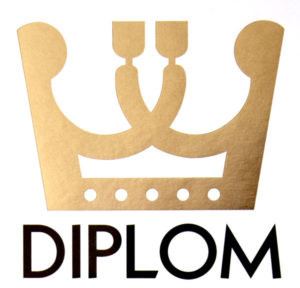 We are very happy and proud to have received first prize in the Swedish Gastronomic Academy Book Awards. Many thanks to the jury and to the publisher. And above all, thank you to you who reads the book! Gastronomic Academy Book Awards is the annual event for all food and beverage books published during the year. The jury’s motivation was: “With their deep and extensive knowledge Britt and Per Karlsson have created the first series of wine travel guides of international class“. But it is much more than travel guides. It is full-blown introductions to the regions:
We are very happy and proud to have received first prize in the Swedish Gastronomic Academy Book Awards. Many thanks to the jury and to the publisher. And above all, thank you to you who reads the book! Gastronomic Academy Book Awards is the annual event for all food and beverage books published during the year. The jury’s motivation was: “With their deep and extensive knowledge Britt and Per Karlsson have created the first series of wine travel guides of international class“. But it is much more than travel guides. It is full-blown introductions to the regions:
- Bordeaux
- Burgundy
- Tuscany
- Piedmont
Read more on the award and on the books on BKWine Magazine: Our new book series “Guide to the World of Wine” wins first prize in Gastronomic Academy Book Awards.
The new sparkling Clàssic Penedès, the world’s first 100% organic appellationen
Clàssic Penedès is a sparkling wine from Catalonia in northern Spain. Sparkling wine has been made under the appellation DO Penedès for quite some time. But in 2014 the rules for Clàssic Penedès were revised and it was launched as a new appellation under its new name. One of the new requirements is that the wines have to be certified organic. The producer Albet i Noya, one of Spain’s organic pioneers, was a driving force behind the decision.
This is the world’s first appellation that is 100% organic. If the wine is not certified organic, it cannot be sold as a Clàssic Penedès. It is as simple as that. The wine is made by the traditional method with a second fermentation in the bottle. The ageing in the bottle before disgorging must be at least 15 months. And, of course, all the grapes must come from Penedès. The grapes are the local Xarello, Macabeu and Parellada. For the moment 15 producers are making Clàssic Penedès: Albet i Noya, Bonans, Castell de Pujades, Celler Can Morral del Moli, Celler Grapissó, Celler Puig Romeu, Cellers AT Roca, Clos Lentiscus, Colet, Loxarel, Mas Bertran, Mas Comtal, Mas dels Clavers Can Gallego, Miquel Jané and Torre del Veguer. Read more: dopenedes.cat
Residual sugar is for Dummies? The Sweet Wine Lovers’ Manifesto
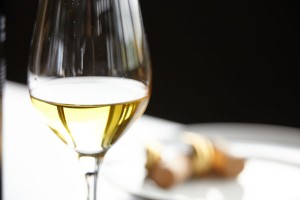 Should you feel ashamed if you prefer some sweetness in your wines? No, says American Tim Hanni, Master of Wine. He has written a book on the subject, “The Sweet Wine Lovers’ Manifesto”. In the book, he complains about what he calls “the dry wine fashionistas who dismiss sweet wine lovers as ‘beginners’ who will learn to like drier, more stylish wines”. These wine snobs, he believes, should realize that people experience acidity and tannins in different ways. Tim Hanni has done research on the subject, and he believes that there are people who simply cannot drink powerful and tannic red wines. They perceive the taste as bitter and unpleasant. They need a bit of sweetness to mask the bitterness.
Should you feel ashamed if you prefer some sweetness in your wines? No, says American Tim Hanni, Master of Wine. He has written a book on the subject, “The Sweet Wine Lovers’ Manifesto”. In the book, he complains about what he calls “the dry wine fashionistas who dismiss sweet wine lovers as ‘beginners’ who will learn to like drier, more stylish wines”. These wine snobs, he believes, should realize that people experience acidity and tannins in different ways. Tim Hanni has done research on the subject, and he believes that there are people who simply cannot drink powerful and tannic red wines. They perceive the taste as bitter and unpleasant. They need a bit of sweetness to mask the bitterness.
There are plenty of wines with residual sugar so the sweet wine lovers need not to sit at the table thirsty. And besides, not all red wines are full-bodied and tannic. But the problem for Hanni is more the attitude of certain wine experts. He believes that wine education should deal more with different people’s tastes and make sommeliers more sensitive and attentive. Maybe he has a point there! Read more: napavalleyregister.com
The Short History of Spain Since 1986
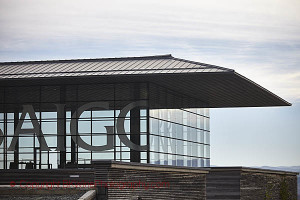 Spain joined the EU in 1986. Large investments followed, also in the wine industry. New vineyards were planted, new wines were created, and producers began to charge higher prices for their wines. New and sometimes spectacularly designed wine cellars were built. In 2006 Spain exported twice as much wine as they did in 1995. The creative Spanish gastronomy was in vogue. The producers wanted to show a modern style of wine. Classic Rioja went out of fashion. Then came the economic crisis of 2008 which hit Spain particularly hard.
Spain joined the EU in 1986. Large investments followed, also in the wine industry. New vineyards were planted, new wines were created, and producers began to charge higher prices for their wines. New and sometimes spectacularly designed wine cellars were built. In 2006 Spain exported twice as much wine as they did in 1995. The creative Spanish gastronomy was in vogue. The producers wanted to show a modern style of wine. Classic Rioja went out of fashion. Then came the economic crisis of 2008 which hit Spain particularly hard.
Wine consumption began to decline, producers were forced to reduce their prices drastically. Now the worst is over. But Spain has some catching up to do. The country has fallen behind Italy and France in reputation. A lot of Spanish wine is sold at extremely low prices. There is so much to discover in Spain. Time for Spanish wines to shine! And by the way, Rioja is back in fashion. Read more about what has happened in Spain in recent years: meininger.de
A researcher studies wine and food tourism
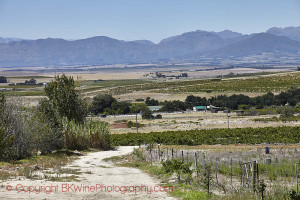 We were contacted a little while back by a PhD student at Swinburne University of Technology in Australia. She is working on a research project concerning “foodies” and other people who travel for pleasure for food and wine. For example, what is important when one is travelling, what kind of destinations you prefer etc.
We were contacted a little while back by a PhD student at Swinburne University of Technology in Australia. She is working on a research project concerning “foodies” and other people who travel for pleasure for food and wine. For example, what is important when one is travelling, what kind of destinations you prefer etc.
She needs more replies to her questionnaire so if you have a few minutes to spare she will be most grateful if you answer her questions. You can find a description of the study here with a link to the questionnaire at the bottom.
Brasserie Makalös in Stockholm | restaurant review
If you want French atmosphere in Stockholm, go to Brasserie Makalös, a stone’s throw from Kungsträdgården in the city centre. Here the waiters speaks Swedish with a French accent (you can speak French with them if you prefer) and the menu includes French classics like boeuf bourguignon, onion soup, grilled entrecote, snails with garlic butter, moules frites and much more. The foie gras stuffed quail is delicious. The wine list includes a good selection of wines by the glass, for example the organic Domaines des 2 Anes in Corbières (115 SEK), a Lirac from Domaine Roger Sabon (130 SEK), Sancerre Les Grandmontains from Domaine Laporte (140 SEK). The selection in bottle is also good but it could be a bit more imaginative. The name of the brasserie comes from Château Makalös, an extraordinary building (the word means nonpareil or incomparable) that was built in 1635 by Jacob de la Gardie not so far away from where the brasserie is now. The chateau burned down in 1825. The brasserie may not be in a chateau but its private palace from the 18th century is beautiful. Brasserie Makalös, Västra Trädgårdsgatan 11 B, Stockholm, brasseriemakalos.se
Swedish wine wins silver medals in the International Wine Challenge
 Vingården i Klagshamn, a winery in southern Sweden has done it again. It has won medals in an international wine competition. This time it was the prestigious International Wine Challenge in London. The winery in Klagshamn won silver medals for its two white wines, Incognito 2015 and EGO 3. Both wines are made with the grape Solaris. EGO 3 has no vintage as it is a solera. It is a blend of several vintages from selected barrels. The winery made its first commercial vintage of grapes from Klagshamn in 2005. Today it has 1.6 hectares of vineyards and produces 5000-6000 bottles annually. Solaris is the most important grape with almost 85% of the plantations. We congratulate the owners Murre and Lena to the silver medals. Read more: vingardeniklagshamn.se
Vingården i Klagshamn, a winery in southern Sweden has done it again. It has won medals in an international wine competition. This time it was the prestigious International Wine Challenge in London. The winery in Klagshamn won silver medals for its two white wines, Incognito 2015 and EGO 3. Both wines are made with the grape Solaris. EGO 3 has no vintage as it is a solera. It is a blend of several vintages from selected barrels. The winery made its first commercial vintage of grapes from Klagshamn in 2005. Today it has 1.6 hectares of vineyards and produces 5000-6000 bottles annually. Solaris is the most important grape with almost 85% of the plantations. We congratulate the owners Murre and Lena to the silver medals. Read more: vingardeniklagshamn.se
Amorim launches NDtech, a new and innovative TCA-free natural cork
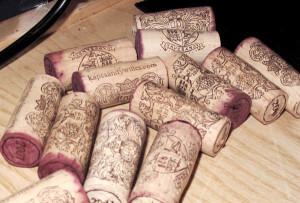 Portuguese company Amorim is the world’s largest producer of natural cork for sealing wine bottles. The company works since many years with advanced technology to minimize the risk of cork taint. Cork taint, which makes the wine smell of mouldy cardboard boxes, is due to a chemical component called TCA (2,4,6 Trichloroanisole). Cork taint has decreased drastically in recent years, thanks to both Amorim and other cork manufacturers. Earlier this year Amorim launched a new cork called NDtech. This cork is guaranteed without any TCA, or rather, if there is any TCA present in the cork it is below the detection threshold of 0.5 nanograms per litre. This is made possible by using fast chromatography. Every single cork is scanned for TCA during a few seconds. For several years now there has been a TCA safe cork called Diam, manufactured by the company Oeneo. But Diam is an agglomerated cork (a “technical cork” in cork-speak). NDtech is punched in one piece from a single cork strip. This is called a “natural cork” in cork-speak. Read more: amorimcork.com
Portuguese company Amorim is the world’s largest producer of natural cork for sealing wine bottles. The company works since many years with advanced technology to minimize the risk of cork taint. Cork taint, which makes the wine smell of mouldy cardboard boxes, is due to a chemical component called TCA (2,4,6 Trichloroanisole). Cork taint has decreased drastically in recent years, thanks to both Amorim and other cork manufacturers. Earlier this year Amorim launched a new cork called NDtech. This cork is guaranteed without any TCA, or rather, if there is any TCA present in the cork it is below the detection threshold of 0.5 nanograms per litre. This is made possible by using fast chromatography. Every single cork is scanned for TCA during a few seconds. For several years now there has been a TCA safe cork called Diam, manufactured by the company Oeneo. But Diam is an agglomerated cork (a “technical cork” in cork-speak). NDtech is punched in one piece from a single cork strip. This is called a “natural cork” in cork-speak. Read more: amorimcork.com
Björk, an unusual Swedish aperitif
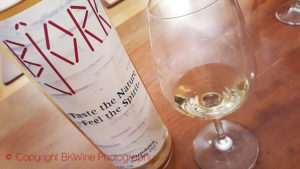 How does the sap from a birch tree taste? Maybe not something you have thought about. Even less considered drinking. But you can drink it and especially if it is served in the form of an alcoholic drink. David Hassan, a Scotsman in the region of Härjedalen in northern Sweden had an idea that he would make the world’s most ecological alcoholic beverage. The result is an aperitif called Björk, which is Swedish for birch (Sweden is filled with these white trees). David has about 400 of them on his land.
How does the sap from a birch tree taste? Maybe not something you have thought about. Even less considered drinking. But you can drink it and especially if it is served in the form of an alcoholic drink. David Hassan, a Scotsman in the region of Härjedalen in northern Sweden had an idea that he would make the world’s most ecological alcoholic beverage. The result is an aperitif called Björk, which is Swedish for birch (Sweden is filled with these white trees). David has about 400 of them on his land.
To produce Björk, he collects the sap and heats it over an open fire using logs from his own forest. He adds yeast and the fermentation takes a few weeks. The product ages in demijohns in a root cellar for one year before it is bottled. The alcoholic content is 22%. It smells of sweet apricots and the taste is definitely exciting and different. It is slightly sweet, a bit perfumed and floral. The aftertaste is quite dry with a small but distinctive tone of forest (if one can say so, it is certainly something that makes it feel different from a “regular” wine). Björk is already served in many Swedish restaurants. Now David wants to invest in the export market with his very Swedish and environmental friendly aperitif. Read more: bjorkvin.se
Fernand Vaquer 1988, Domaine Vaquer, Vin de Pays Catalan, Roussillon | Britt’s Wine of the Month
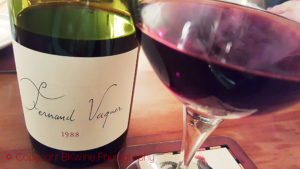 Fantastic wine. Delicious, very elegant but still quite full-bodied. Age has given it a silky texture and some aromas of leather and dried fruit. It has aged very well. The grapes are 80% Carignan and 20% Grenache. Which shows, if somebody still doubts it, that wines from Carignan can be amazing wines to age. The wine is completely unoaked. It was aged in concrete tanks for 24 months. “In the beginning, this wine was very structured with tannins and power and a great aging potential”, says Frédérique Vaquer, the current owner and winemaker.
Fantastic wine. Delicious, very elegant but still quite full-bodied. Age has given it a silky texture and some aromas of leather and dried fruit. It has aged very well. The grapes are 80% Carignan and 20% Grenache. Which shows, if somebody still doubts it, that wines from Carignan can be amazing wines to age. The wine is completely unoaked. It was aged in concrete tanks for 24 months. “In the beginning, this wine was very structured with tannins and power and a great aging potential”, says Frédérique Vaquer, the current owner and winemaker.
Domaine Vaquer is located in the small village of Tresserre in the district of Les Aspres in Roussillon, some 20 kilometres south of Perpignan. Frédérique and her husband Bernard took over from Fernand, Bernard’s father, in 1991 and since 2001 Frédérique manages the estate alone. She always strives for finesse and elegance, and she uses very little, or no oak at all. Her wines are some of the best in Roussillon. The 1988, as well as some other older vintages, are still available at the winery. Read more: domaine-vaquer.com
The autumn / fall wine tours 2017 – dates and destinations
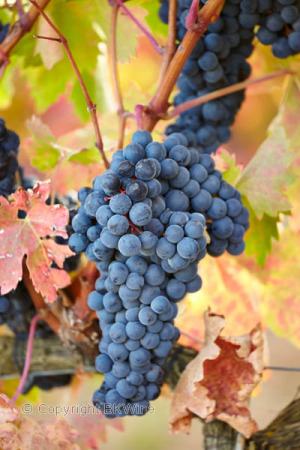 In a week or two we will have the full wine tour programs ready. We will publish them as soon as we can on the wine travel site.
In a week or two we will have the full wine tour programs ready. We will publish them as soon as we can on the wine travel site.
But we can already give you the destinations and the dates:
- Bordeaux, September 27 – October 1
- The Douro Valley, Portugal, October 18-22
- Piedmont, wine & truffles (!), October18-22
More details will follow soon!
[divider_flat]
Features
Features that we have published during the past month, with lots of reading for you.
Young Wine Drinkers in New York and London, what they drink | Britt on Forbes
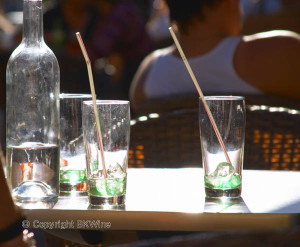 “Which wines will we be drinking 20 years from now? How will the wine business look in the future? Perhaps the future of wine can be seen in the drinking habits of today’s young people. Lately there have been many studies on the subject. Do young people between 21 and 35 drink wine at all? How often do they drink? What do they drink? How do they choose their wines? Admittedly we have learned recently that polls are not as reliable as we used to think. At least when it comes to politics. Maybe it’s different for wine though.” The study was made by Sowine/SSI for the big wine fair Vinisud that takes place in January.
“Which wines will we be drinking 20 years from now? How will the wine business look in the future? Perhaps the future of wine can be seen in the drinking habits of today’s young people. Lately there have been many studies on the subject. Do young people between 21 and 35 drink wine at all? How often do they drink? What do they drink? How do they choose their wines? Admittedly we have learned recently that polls are not as reliable as we used to think. At least when it comes to politics. Maybe it’s different for wine though.” The study was made by Sowine/SSI for the big wine fair Vinisud that takes place in January.
Read more on this in in Britt’s article on BKWine Magazine, originally published on Forbes: Young Wine Drinkers in New York and London, what they drink | Britt on Forbes.
Vintage 2015 from Schloss Johannisberg
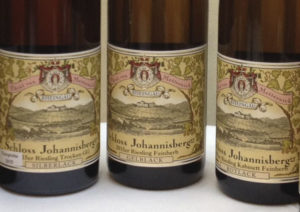 ”Schloss Johannisberg in the Rheingau wine region is one of the most historic wine producers in Germany. They were the first German wine estate entirely planted with riesling, in 1720. It was also here that the German spätlese wine was produced for the first time, in 1775. At that time it was a mistake… 2015, which we tasted this time, is a very good vintage in Germany. The wine has good concentration and excellent purity, combined with fine acidity level, which together gives the wines great freshness and excellent balance on the sweet side.”
”Schloss Johannisberg in the Rheingau wine region is one of the most historic wine producers in Germany. They were the first German wine estate entirely planted with riesling, in 1720. It was also here that the German spätlese wine was produced for the first time, in 1775. At that time it was a mistake… 2015, which we tasted this time, is a very good vintage in Germany. The wine has good concentration and excellent purity, combined with fine acidity level, which together gives the wines great freshness and excellent balance on the sweet side.”
Read more on the tasting of the new releases from Schloss Johannisberg in Tomas Eriksson’s article on BKWine Magazine: Vintage 2015 from Schloss Johannisberg.
Making wine in Sweden from Italian grapes, another curious project from Oenofors
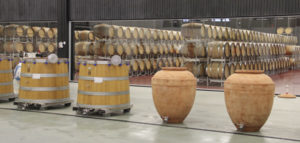 Nordic Sea Winery is located in the beautiful small coastal town of Simrishamn on the Swedish south coast. A big portion of wine sold in Sweden gets its final touch here, the “winery” is owned by one of Sweden’s largest wine importers, Oenoforos. Now a new era begins at NSW. Previously wines that have been fermented in the wine regions have been shipped to NSW where they received final ageing and blending. Now a new project that also ferments the wines in Simrishamn starts, in other words, doing the whole process from A to Z, except to grow the vines of course.
Nordic Sea Winery is located in the beautiful small coastal town of Simrishamn on the Swedish south coast. A big portion of wine sold in Sweden gets its final touch here, the “winery” is owned by one of Sweden’s largest wine importers, Oenoforos. Now a new era begins at NSW. Previously wines that have been fermented in the wine regions have been shipped to NSW where they received final ageing and blending. Now a new project that also ferments the wines in Simrishamn starts, in other words, doing the whole process from A to Z, except to grow the vines of course.
BKWine Magazine’s reporter Ola Öhlund was on site when the first shipment of grapes arrived for sorting, crushing and fermentation. Read more: Making wine in Sweden from Italian grapes, another curious project from Oenofors.
From bone dry to super sweet, sherry on-line with Gonzalez-Byass
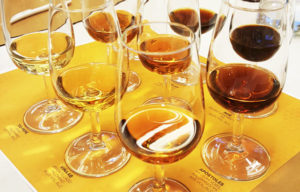 “At the occasion of the international sherry week Gonzalez-Byass did a tasting over video with several European cities, including Stockholm. The tasting was led, on video, by Gonzalez-Byass’ chief winemaker Antonio Flores, who has been responsible for the production of sherry at Gonzalez Byass since 1980. We tasted eight wines, from the lightest fino Tio Pepe, to the powerful and sweet Noé PX. There is a large spread in the style; the first five wines are totally dry and the last three are increasingly sweet. There are few other wine regions that have such a large spread in style, and with only two grapes, Palomino Fino and Pedro Ximénez. Wines well worth a try!”
“At the occasion of the international sherry week Gonzalez-Byass did a tasting over video with several European cities, including Stockholm. The tasting was led, on video, by Gonzalez-Byass’ chief winemaker Antonio Flores, who has been responsible for the production of sherry at Gonzalez Byass since 1980. We tasted eight wines, from the lightest fino Tio Pepe, to the powerful and sweet Noé PX. There is a large spread in the style; the first five wines are totally dry and the last three are increasingly sweet. There are few other wine regions that have such a large spread in style, and with only two grapes, Palomino Fino and Pedro Ximénez. Wines well worth a try!”
Read more on these delicious sherries in Mats Lindelöw’s article on BKWine Magazine: From bone dry to super sweet, sherry on-line with Gonzalez-Byass.
Cecchi in Chianti, Montalcino, and Maremma
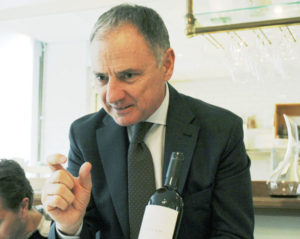 The Cecchi family has for 120 years been one of the premier producers in the Chianti region. Through acquisitions and partnerships they have started making wine in other areas in Tuscany. This tasting with Andrea Cecchi offered a mix of wines from their regular range and also one unique wine.
The Cecchi family has for 120 years been one of the premier producers in the Chianti region. Through acquisitions and partnerships they have started making wine in other areas in Tuscany. This tasting with Andrea Cecchi offered a mix of wines from their regular range and also one unique wine.
BKWine Magazine’s reporter Peter Cronström met with Andrea Cecchi and tasted his wines. Read more: Cecchi in Chianti, Montalcino, and Maremma.
[divider_flat]
Seven Brunello di Montalcinos in one evening
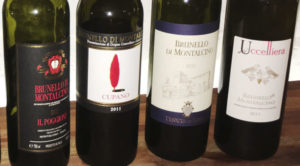 “Montalcino is an area at around 500 meters altitude in Tuscany. It is home not only to the DOCG Brunello di Montalcino wine but also to the lighter red DOC wine Rosso di Montalcino and to the white DOC Moscadello di Montalcino that is made from muscat grapes. The Brunello received its DOCG as the first Italian wine in 1980. The DOCG rules for the Brunello wine means that they must be made from only the Brunello grape variety and that they must be aged for more than 4 months in barrel and at least 2 years in the bottle as well as for a total of at least 4 years before the sale. This means that the youngest wines available at the moment are from 2011.”
“Montalcino is an area at around 500 meters altitude in Tuscany. It is home not only to the DOCG Brunello di Montalcino wine but also to the lighter red DOC wine Rosso di Montalcino and to the white DOC Moscadello di Montalcino that is made from muscat grapes. The Brunello received its DOCG as the first Italian wine in 1980. The DOCG rules for the Brunello wine means that they must be made from only the Brunello grape variety and that they must be aged for more than 4 months in barrel and at least 2 years in the bottle as well as for a total of at least 4 years before the sale. This means that the youngest wines available at the moment are from 2011.”
Read more on Montalcino and on seven wines that illustrate the region’s character in Henrik Stadler’s article on BKWine Magazine: Seven Brunello di Montalcinos in one evening.
Top wines from Bordeaux, primeurs and aged
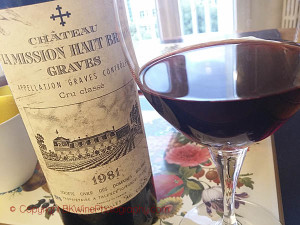 “The annual primeur tasting of Bordeaux in Stockholm took place earlier this fall. For the sixth year running Winefinder, a wine merchant, organised the tasting and I had the opportunity to sit down with their (then) CEO Ole Nielsen for an interview. The interview will be published here soon. But first it’s time for a review of the 2015 Bordeaux wines, and some older vintages.”
“The annual primeur tasting of Bordeaux in Stockholm took place earlier this fall. For the sixth year running Winefinder, a wine merchant, organised the tasting and I had the opportunity to sit down with their (then) CEO Ole Nielsen for an interview. The interview will be published here soon. But first it’s time for a review of the 2015 Bordeaux wines, and some older vintages.”
BKWine Magazine’s reporter Tobias Karlsson reports from this exceptional tasting and gives you his favourites. Read more: Top wines from Bordeaux, primeurs and aged.
Travel: Join us in the Bordeaux vineyards on the spring wine tour to Bordeaux in May.
Seven Port wines from Taylor’s to brighten up your holidays
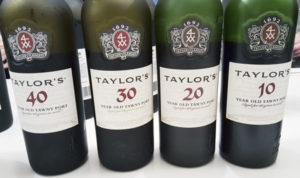 It is never too late to enjoy a glass of port!
It is never too late to enjoy a glass of port!
A tasting of a selection of Taylor’s port wines illustrated the wide variety of port wines that exist, ranging from young ruby to vintage ports to lay down in the cellar to old and mellow tawny.
When Taylor’s export manager Jorge Ramos came to Sweden he met with BKWine Magazine’s Mats Lindelöw. Read more: Seven Port wines from Taylor’s to brighten up your holidays.
Travel: You can travel with us this autumn on the wine tour to the Douro Valley to experience port at the source.
Luxury organic, Chateau Latour converts | Britt on Forbes
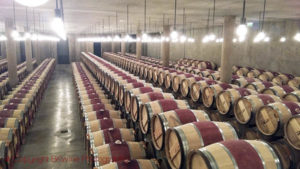 Bordeaux is perhaps the most traditional and aristocratic of all wine regions. But it is not immune to trends and to concerns about the environment. The latest big-name chateau to convert to organic wine growing and wine making is Château Latour, one of the premier grand cru classes of 1855 (yes, it IS a long time ago). They are following in the footsteps of an increasing number of chateaux who are moving to a more environmentally friendly way of making wine.
Bordeaux is perhaps the most traditional and aristocratic of all wine regions. But it is not immune to trends and to concerns about the environment. The latest big-name chateau to convert to organic wine growing and wine making is Château Latour, one of the premier grand cru classes of 1855 (yes, it IS a long time ago). They are following in the footsteps of an increasing number of chateaux who are moving to a more environmentally friendly way of making wine.
Read more on BKWine Magazine on Chateau Latour’s conversion to organics and on the story of the wine itself in Britt’s article originally published on Forbes: Top Bordeaux Château Latour Goes Organic.
Travel: Travel with us this spring in the vineyards on the Bordeaux wine tour!
The French woman of Oregon, Véronique Drouhin Boss of Roserock Drouhin Oregon
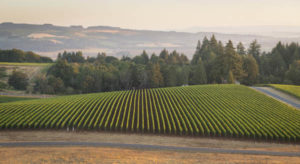 “In 2013, Domaine Drouhin Oregon purchased 279 acre (113 ha) Roserock Vineyard in Willamette Valley’s Eola-Amity Hills. This acquisition adds to the 225 acre (90 ha) estate in Dundee Hills they established in 1987, and allows for a focused expression of terroir reflective of their Burgundy domaine, Maison Joseph Drouhin. Véronique Drouhin-Boss, Robert Drouhin’s daughter, holds court as the vigneron for the family’s holdings, including Roserock Drouhin Oregon. Elegant, refined, graceful.”
“In 2013, Domaine Drouhin Oregon purchased 279 acre (113 ha) Roserock Vineyard in Willamette Valley’s Eola-Amity Hills. This acquisition adds to the 225 acre (90 ha) estate in Dundee Hills they established in 1987, and allows for a focused expression of terroir reflective of their Burgundy domaine, Maison Joseph Drouhin. Véronique Drouhin-Boss, Robert Drouhin’s daughter, holds court as the vigneron for the family’s holdings, including Roserock Drouhin Oregon. Elegant, refined, graceful.”
Read more on Drouhin’s adventure in Oregon in LM Archer’s article on BKWine Magazine: The French woman of Oregon, Véronique Drouhin Boss of Roserock Drouhin Oregon.
Truffles Fontina Fondue with a Poached Egg in Piedmont
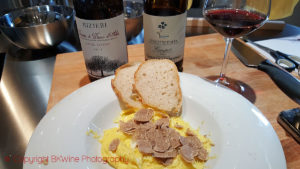 Fondue is French and means melted. In cooking fondue usually means a pot of melted cheese that you can dip pieces of bread, or something else in. In Italy they also use it to mean a creamy sauce – or simply a cream – of melted cheese that you can serve with something. An excellent way to present truffles is to serve it on a fondue with a poached egg, so, egg in a creamy cheese sauce. It may not sound very fancy but it can be very good.
Fondue is French and means melted. In cooking fondue usually means a pot of melted cheese that you can dip pieces of bread, or something else in. In Italy they also use it to mean a creamy sauce – or simply a cream – of melted cheese that you can serve with something. An excellent way to present truffles is to serve it on a fondue with a poached egg, so, egg in a creamy cheese sauce. It may not sound very fancy but it can be very good.
Watch our two videos with a professional chef in Barolo in Piedmont who shows how to make fondue and poached egg, including the recipe, on BKWine Magazine: Truffles Fontina Fondue with a Poached Egg in Piedmont.
Travel: Come with us and explore the vineyards and the truffle season on the wine tour to Piedmont the coming autumn.
Festive food: Paris shops and eats at Christmas and New Year | Per on Forbes
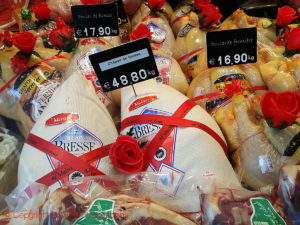 What is your typical Christmas and New Year food specialities? Many countries have something special for this season. Sweden has the Julskinka and Julbord. The United States have the turkey. In Britain they feast on Christmas Pudding and Mince Pies. In Italy, or at least in Veneto, Christmas is not without a Pandoro, or a Panforte in Tuscany. But France, curiously don’t have much of Christmas and New Year specials. But France being France food is obviously vitally important over the festive seasons. Instead what the French do is they eat the best food available and indulge in many different delicacies, but few that are different from what you would actually eat all year round, oyster, lobster, foie gras, champagne and fine wine etc. But there are actually a few Christmas and New Year specialities here too.
What is your typical Christmas and New Year food specialities? Many countries have something special for this season. Sweden has the Julskinka and Julbord. The United States have the turkey. In Britain they feast on Christmas Pudding and Mince Pies. In Italy, or at least in Veneto, Christmas is not without a Pandoro, or a Panforte in Tuscany. But France, curiously don’t have much of Christmas and New Year specials. But France being France food is obviously vitally important over the festive seasons. Instead what the French do is they eat the best food available and indulge in many different delicacies, but few that are different from what you would actually eat all year round, oyster, lobster, foie gras, champagne and fine wine etc. But there are actually a few Christmas and New Year specialities here too.
Read more on French holiday and festive food in Per’s article on BKWine Magazine, originally published on Forbes: Festive food: Paris shops and eats at Christmas and New Year | Per on Forbes.
Wine tours
Some information about current and future wine tours with BKWine.
Champagne, a variety of flavours and characters | wine tour
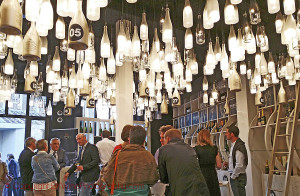 Champagne has more and more competitors. The world-wide demand for sparkling wines is increasing but today Champagne has to struggle for attention amongst Prosecco, Cava and many other bubbly wines from different countries. But Champagne is still without a doubt the most interesting region for sparkling wines. Not least thanks to the large variety of styles. And today, with so many excellent Champagnes from small, independent producers, the variation is bigger than ever.
Champagne has more and more competitors. The world-wide demand for sparkling wines is increasing but today Champagne has to struggle for attention amongst Prosecco, Cava and many other bubbly wines from different countries. But Champagne is still without a doubt the most interesting region for sparkling wines. Not least thanks to the large variety of styles. And today, with so many excellent Champagnes from small, independent producers, the variation is bigger than ever.
These independent producers often make small quantities of Champagne and always only from their own grapes. They do not buy grapes from others, like the Champagne houses do. Perhaps they have vines only in one village, which gives them the opportunity to show the terroir from that particular village. They want to make Champagnes with character. And they would like their Champagnes to be drunk like a still wine, with food, and not just as an aperitif. On the spring wine tour to Champagne we will taste Champagnes both from the houses and from the independent producers. The Champagne wine tour takes place in April. Book now!
We are publishing a new rather unique book on Champagne this winter so you can be sure to get the latest insights.
Not only wine in Bordeaux | wine tour
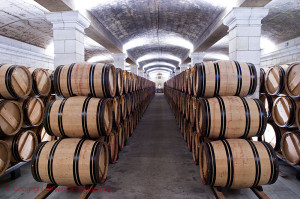 Bordeaux is very much about water (big surprise!). The wide and mighty Garonne River flows through the city of Bordeaux. The quayside has been totally renovated and Bordeaux now has a magnificent waterfront. You can walk along the river for several kilometres, for example, to the outskirts of the city where the new and spectacular wine museum Cité du Vin is located. Along the way you can stop in some nice cafés.
Bordeaux is very much about water (big surprise!). The wide and mighty Garonne River flows through the city of Bordeaux. The quayside has been totally renovated and Bordeaux now has a magnificent waterfront. You can walk along the river for several kilometres, for example, to the outskirts of the city where the new and spectacular wine museum Cité du Vin is located. Along the way you can stop in some nice cafés.
The Atlantic Ocean is not far away. The Arcachon Bay is well known for its oysters. Here in Bordeaux they are served with a small, spicy sausage and a glass of Entre-deux-Mers, preferably made with a lot of Sauvignon Blanc. To get to Saint-Emilion, you cross another mighty river, the Dordogne. Garonne and Dordogne merge just north of the city of Bordeaux and forms the Gironde estuary. Médoc is a peninsula with the Atlantic Ocean on one side and the Gironde on the other. The vines that overlook the Gironde are the happiest, as the saying goes in Médoc. Our spring wine tour to Bordeaux takes place in May. Book now!
Don’t be an egoist! Share with your friends and other wine enthusiasts! Forward the Brief to your friends! Suggest that they sign up for a free subscription !
© Copyright BKWine


